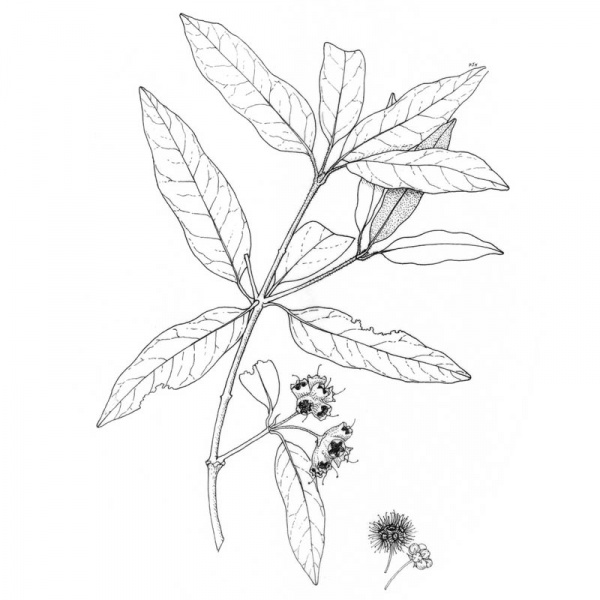Scientific Name: Syncarpia glomulifera
-
Pronunciation:sin-CARP-ee-ah glom-ewe-LIFF-er-ah
-
Common Name:Turpentine




-
Derivation:Syncarpia: Gr. syn - together, united; carpos - fruit. (Refers to fruit) glomulifera: L.glomus - ball (refers to head of flowers)
-
Type:
-
Family:MYRTACEAE
-
Flowers:White, spring,summer
-
Vegetation Type:Wet Eucalypt Forest - (eg.Harry Spring Pk )
-
Species List:Kin Kin Arboretum, EdingtonDr, Cooroibah, NLTalks2010, Cooroibah Airstrip, Weyba Nature Refuge, Eumarella Rd., Cooroy Primary School, NNP service road, Cooroibah26.4.09, Cooloothin Corner, Tewantin Forest Gyndier, Upper Yandina Creek, Eucalypt Forest Trees, TAFE Noosa Banks Dandaloo, Stratford Park, Heritage Park, RE 12.9-10.l. RE 12.9-10.14. RE 12.9-10.16. RE 12.12.2a.
Cultural Notes
Honey Production: light amber, honey source medium, pollen source medium. Timber famous for durability. Much of the Suez Canal is constructed with logs of Turpentine.
Identification Notes
Bark: fibrous Flower head pubescent at flowering Leaves hoary below Yurol Forest Pomona Park Syncarpias: opposite leaves, which are sometimes crowded at the top of shoots; fruit a compound structure; a red sticky sap exudes from cut twigs and branchlets.
Associated Fauna
Bird and butterfly attracting
Landscaping Notes
Successfully propogated by Noosa & District Landcare|Successfully propagated by Mooloolah Native Nursery|| Prefers moist soil. Ideal large windbreak.||Successfully propagated by Barung Landcare||
//Close button
×


